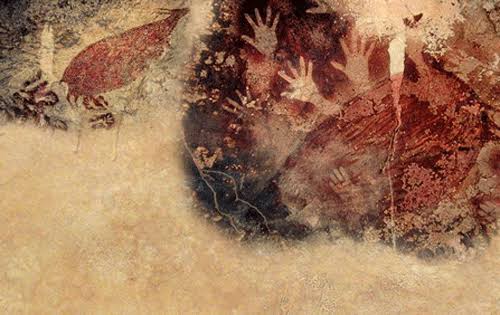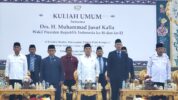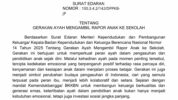World’s Oldest Artwork at Risk: Experts Urge Protection for Prehistoric Paintings in Indonesia
MAROS, RAKYAT NEWS – In a bid to protect Indonesia’s rich cultural heritage, archaeologists are calling for the preservation of prehistoric cave paintings in the Maros-Pangkep karst region of South Sulawesi. These ancient artworks, some dating back 51,200 years, are among the oldest known examples of human creativity in the world.
The paintings, discovered by a collaborative team of researchers from Indonesia’s National Research and Innovation Agency (BRIN), Griffith University, and Southern Cross University, Australia, depict images of wild pigs, human-like figures, and hand stencils.
Basran Burhan, a researcher at the Sulawesi Archaeological Collaboration Center and BRIN, emphasized the importance of safeguarding these invaluable artifacts. Speaking to reporters in Kendari on Friday, Burhan urged visitors to adhere to preservation guidelines set by the Cultural Heritage Conservation Office (BPK) in Makassar.
He warned against defacing or adding graffiti to the ancient sites, which have gained significant attention on social media following their recent discovery.
The prehistoric paintings, located in caves such as Leang Tedongnge and Leang Karampuang, were first uncovered in 2017 by a team of archaeologists from Hasanuddin University. After years of meticulous research, the findings were publicly revealed in 2021, with the oldest painting estimated to be around 45,500 years old. These discoveries have shed light on the early artistic expressions of ancient humans in Southeast Asia.
To date, 734 prehistoric sites have been identified across the Maros-Pangkep karst region, with approximately 70% of them featuring cave paintings. These artworks include depictions of anoa (a type of buffalo), wild pigs, human handprints, and birds. While the paintings of birds are believed to be relatively younger, the oldest artwork—a 51,200-year-old depiction of a pig and a human-like figure—remains a testament to the region’s archaeological significance.
Burhan highlighted the need for continued exploration, suggesting that even older paintings may still lie undiscovered in the area. He also expressed hope that the public would appreciate these ancient treasures by respecting their preservation. The growing interest in the sites has prompted local authorities to enhance efforts to protect them from vandalism and environmental damage.
The Maros-Pangkep karst region, now a UNESCO Global Geopark, has become a popular destination for tourists and researchers alike. Its unique geological formations and cultural heritage have drawn international attention, making it a key site for understanding human history. Local officials have also been working to promote sustainable tourism, ensuring that the area’s natural and cultural assets are preserved for future generations.
In addition to their historical value, the prehistoric paintings have sparked discussions about the early migration patterns and cultural practices of ancient humans in the region. Archaeologists believe that further studies could reveal more about the lives and beliefs of the people who created these artworks tens of thousands of years ago.
As efforts to protect these ancient sites continue, authorities are calling on the public to play an active role in their preservation. By raising awareness and enforcing strict conservation measures, they hope to ensure that these priceless pieces of human history remain intact for years to come. The discovery of the Sulawesi cave paintings not only underscores Indonesia’s rich cultural heritage but also highlights the importance of safeguarding such treasures for future generations. (Uki Ruknuddin)



























Tinggalkan Balasan